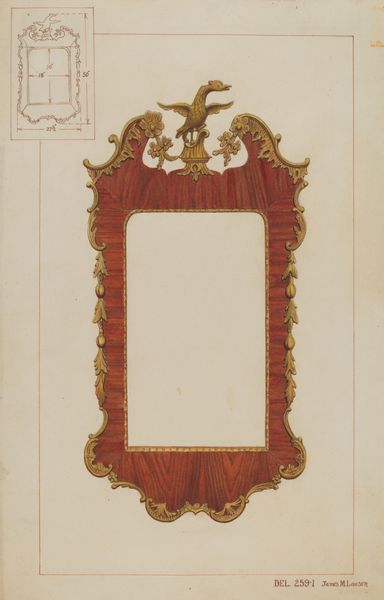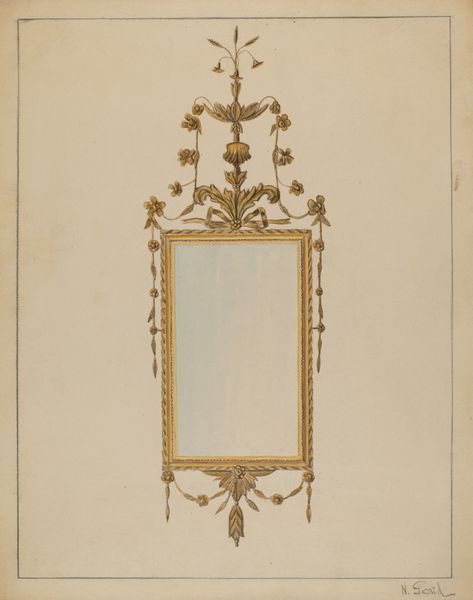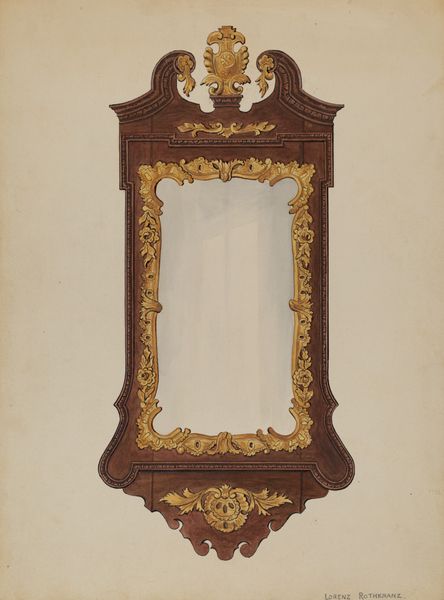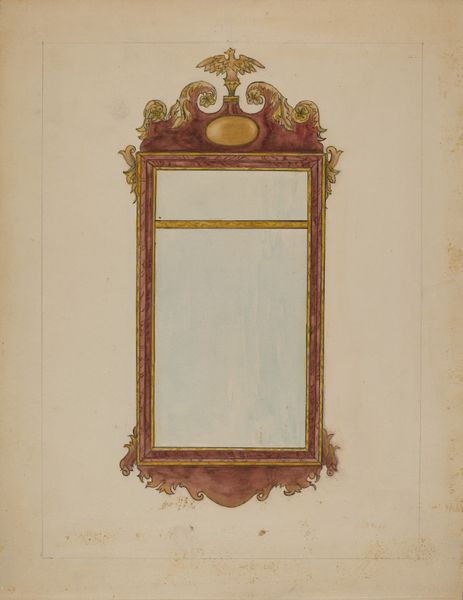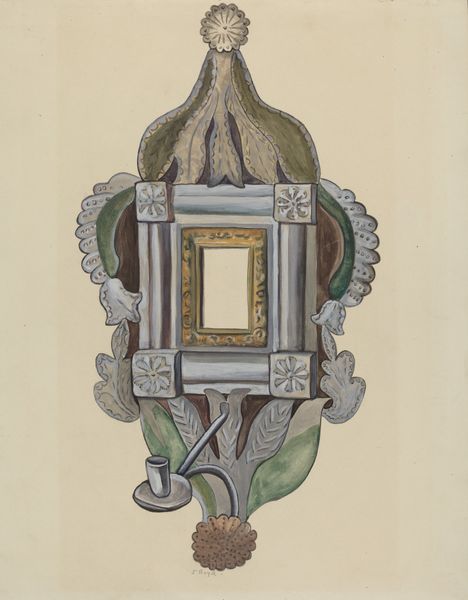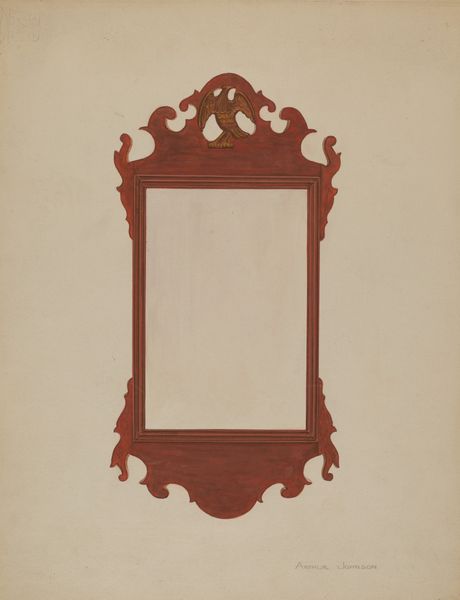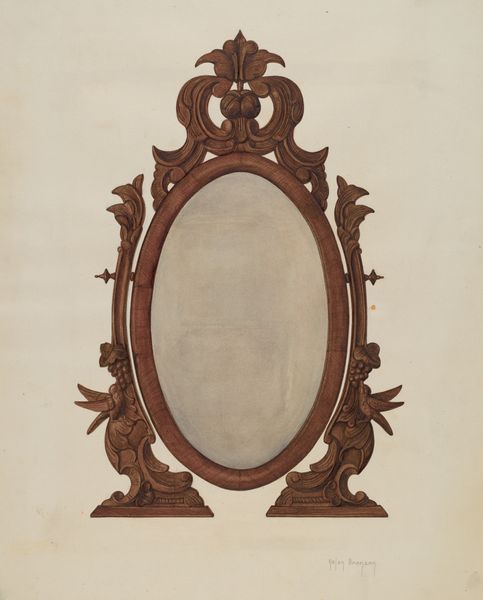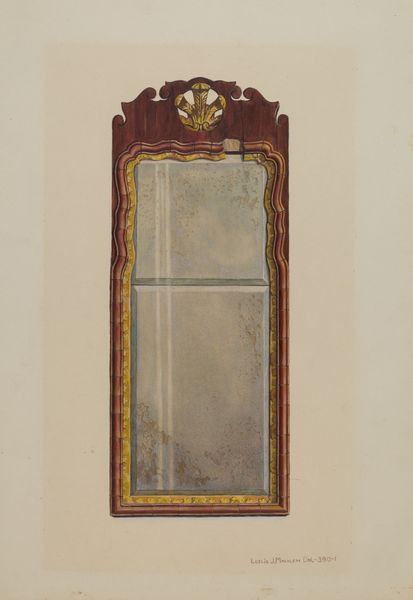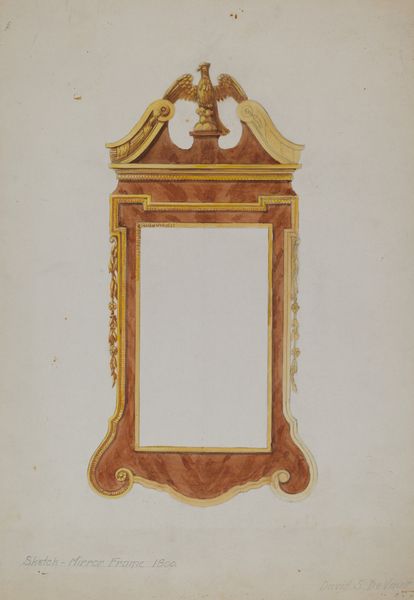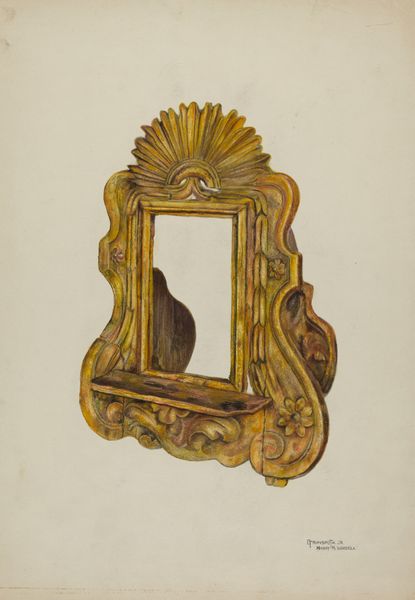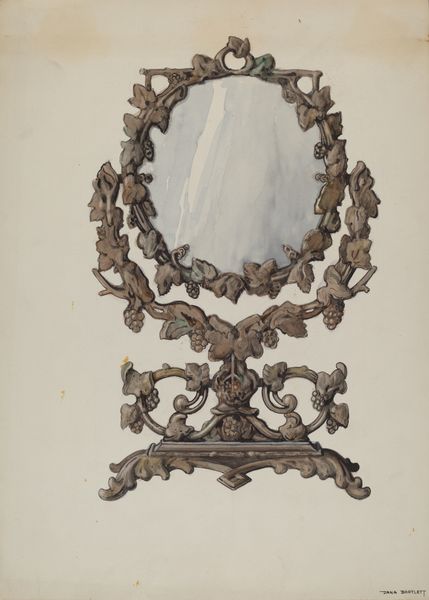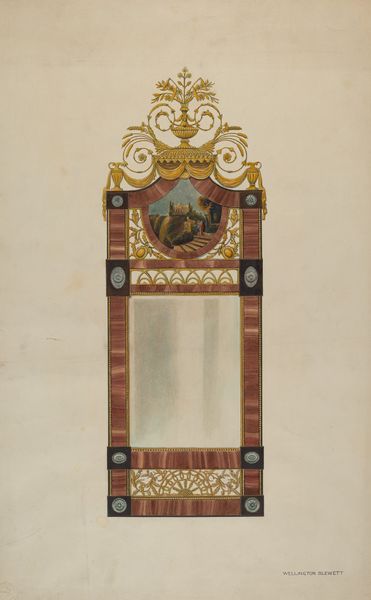
drawing, coloured-pencil, watercolor
#
drawing
#
coloured-pencil
#
watercolor
#
coloured pencil
#
decorative-art
#
watercolor
Dimensions: overall: 50.1 x 33.7 cm (19 3/4 x 13 1/4 in.) Original IAD Object: none given
Copyright: National Gallery of Art: CC0 1.0
Curator: Here we have Marie Lutrell's "Mirror," a 1940 watercolor and colored pencil drawing. It seems ready to transport us to a very specific, bygone era. Editor: My first thought is, opulent but slightly faded. There's a definite sense of crafted artifice, yet the palette feels restrained, almost melancholic. What catches your eye initially? Curator: It's the interplay between the medium and the subject. Using humble drawing materials to depict such a classically ornamented mirror raises interesting questions. Lutrell forces us to consider its role within domestic service or as a possible interior design project. Editor: I agree, there's something about that contrast that makes it so engaging. The formal symmetry and careful rendering create a sense of balanced perfection, only enhanced by its decorative embellishments. Are we meant to view this as purely decorative, or is there a deeper intent? Curator: Well, the 1940s were a time of significant social and economic change, reflected in a resurgence in applied and decorative arts that was about labor, materials and production. By focusing on the depiction of what can be an ornate piece, I would contend that she turns that notion of an art object, such as a mirror, on its head to offer commentary. How do you think this artwork is working for contemporary audiences, knowing its art and design origins? Editor: Now that you mention the shift and considering today’s aesthetics and consumerism, it's possible we bring a lens to the formal attributes through our understanding of class and social commentary. Perhaps even a longing for detail amid minimalistic designs. But beyond that, is this symmetry a response to the social upheavals? Does the somewhat restrained color palette reflect some broader anxiety? Curator: Potentially, the anxiety, but in looking at Luttrell's choices, it's an exciting chance to revisit the value and relevance of the production of a decorative art style. It goes against modern aesthetics to explore function as a key for engaging with this artform. Editor: Indeed. It offers ample material for reflection, not unlike a real mirror should. It makes you wonder who commissioned such a thing. Curator: Or even, the potential consumer and placement within their space. Editor: Precisely, so next time you peer into a mirror, may it spark thoughts on more than just appearances. Curator: I couldn't have said it better myself.
Comments
No comments
Be the first to comment and join the conversation on the ultimate creative platform.
